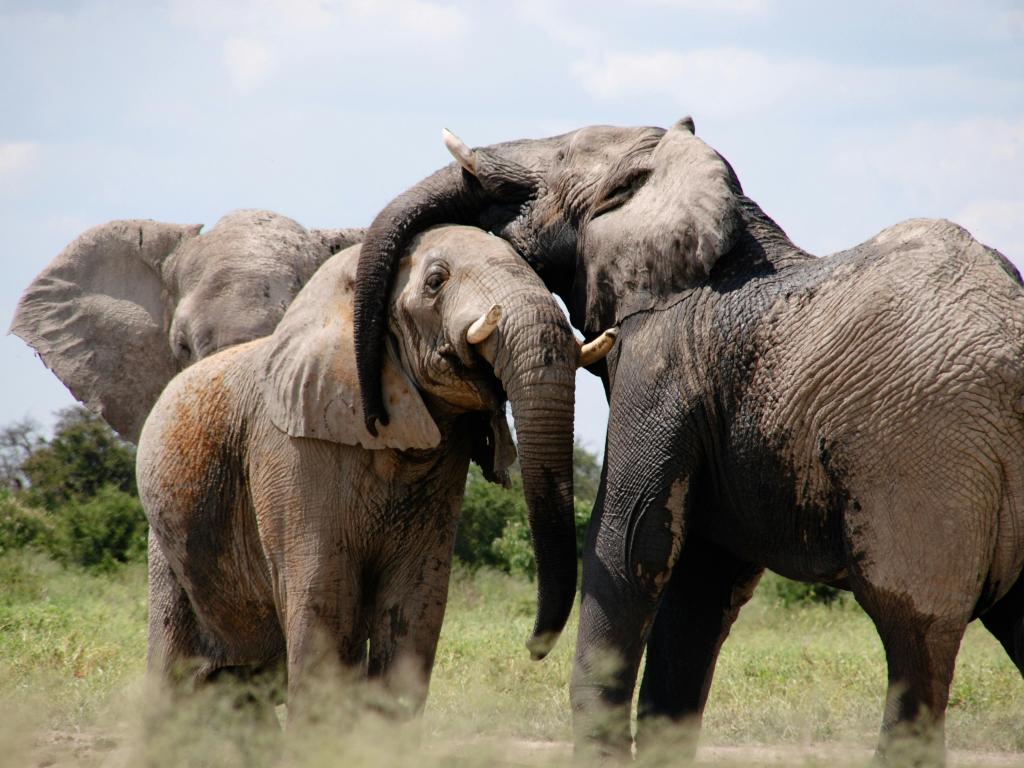Elephants Threaten Baobab Trees in Gonarezhou National Park

In Gonarezhou National Park (GNP), Zimbabwe, elephants are causing significant changes to the landscape by eating and damaging trees. These elephants, with a population density of over two per square kilometre, are turning wooded areas into open savannas, which threatens the survival of certain tree species, especially the long-lived baobab (Adansonia digitata).
Elephant Impact and Baobab Protection
A recent study led by former SEEC MSc student, Jarryd Foster, aimed to find out if there are any safe zones for baobabs in GNP where elephants can't reach them. The study also looked at different ways to protect these trees. Researchers examined 563 baobabs in the northern part of the park to see how much damage elephants had done and to test the effectiveness of protective measures.
Jarryd says, “the results were eye-opening, with almost every sampled baobab affected by elephants in some way, even those on steep slopes where it’s difficult to imagine an elephant standing. This highlights the vulnerability of these iconic trees to high elephant densities and raises questions about their future in the landscape. However, the success of the protection measures is encouraging and justifies GNP’s continued investment in them”.
The results were concerning: 99% of the baobabs had been stripped of bark to some extent, and 22% had holes gouged into their trunks by elephants. The likelihood and severity of this damage decreased the further the trees were from permanent water sources, on steeper slopes, and where there were more boulders. Trees on steep slopes were less damaged than those on flat ground.
Even though these factors provided some protection, none offered complete safety from elephants. However, using protective measures like wrapping fencing wire around the baobab trunks significantly increased their survival. These measures doubled the survival rate of baobabs over five years, showing promise as effective conservation strategies.
Looking Ahead
The study highlights the need to thoroughly understand the future of baobabs in GNP by studying their locations and the natural protections they have, such as distance from water, slope, and boulder cover. While it's impossible to fully protect baobabs from elephants, targeted management can greatly improve their chances of survival.
These findings offer valuable insights for conservation strategies in other African savanna areas facing similar issues. As elephants continue to put pressure on tree populations, it's essential to develop and use effective management techniques that consider the needs of both the elephants and the tree species.
Vernon Visser, SEEC core member and co-supervisor of Jarryd’s project, says “this study highlights that, even for iconic species like elephants and baobabs, we still have so much to learn. We need far more projects, such as Jarryd’s, to ensure the successful conservation of Africa’s amazing savannas”.
This study shows the importance of adaptive management in dealing with the complex relationships between large herbivores and vegetation in savanna ecosystems. By using the natural protections provided by the landscape and implementing protective measures, conservationists can help ensure the survival of iconic species like the baobab, which are crucial for maintaining the health of African savannas.
